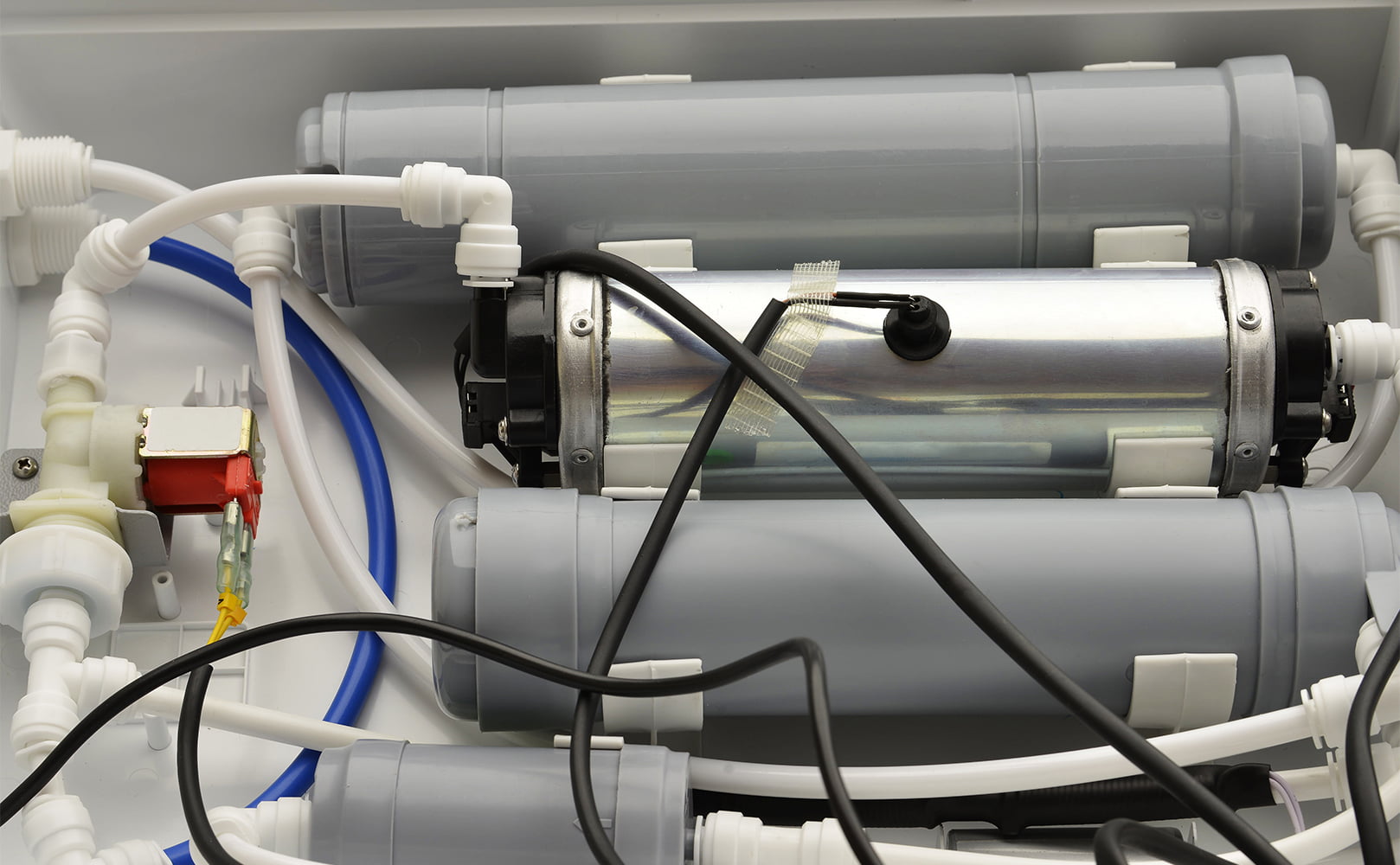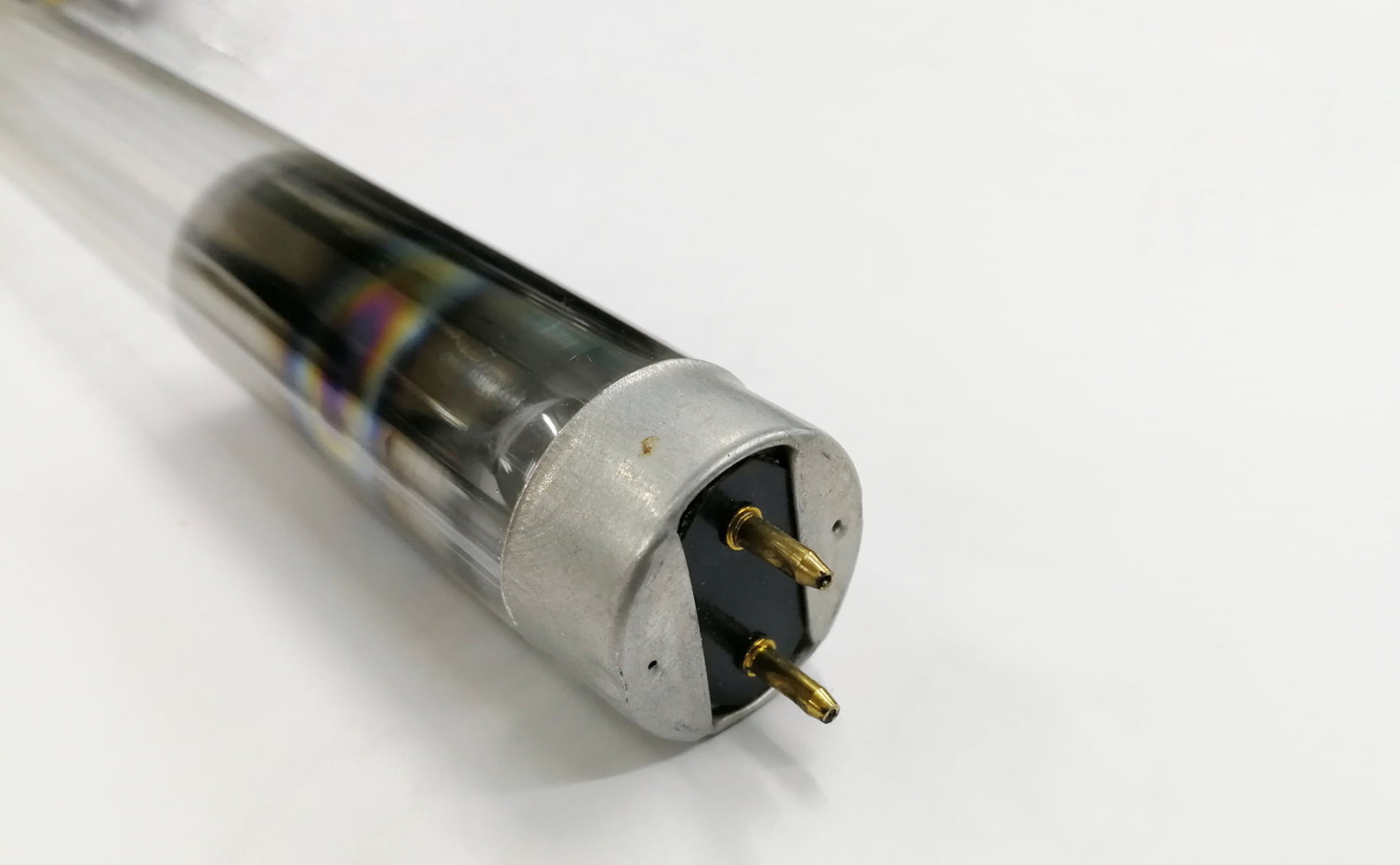Is UV Water Filtration Safe for Drinking?
Written by: Gene Fitzgerald // Last Updated: Feb 2, 2023
This page may contain affiliate links. If you buy a product or service through such a link we earn a commission at no extra cost to you. Learn more.
UV disinfection has emerged as one of the leading solutions for water purification. Like all other methods available on the market, it has its advantages and disadvantages. As such, understanding the safety implications of using a UV water purifier is important before investing in one.
As long as necessary precautions are observed, UV water purifiers are completely safe. However, a UV purifier alone might not be enough to cleanse a household’s water supply to a safe level. Since it does nothing to remove solid particles and non-biological contaminants, it must usually be combined with other treatment methods to be truly effective.
Key Takeaways
- When used and maintained correctly, UV water purifiers are among the safest and most effective water disinfection tools on the market.
- UV purifiers are also safe for the environment. They use little energy only and have a small environmental footprint.
- Depending on the water conditions, UV water filters must be used together with pre-filtration so that microorganisms cannot hide behind impurities and evade the effects of UV light.
Are UV Water Purifiers Safe?
So, is UV water purification safe?
When used and maintained correctly, UV water purifiers are among the safest and most effective water disinfection methods on the market. They offer many advantages over other purification methods. For example, no chemicals are mixed into the water, and no water is wasted in the process.
UV purifiers are also safe for the environment for the same reasons. They use less power than some alternative purification methods, further adding to the small size of their environmental footprint.
When Are UV Water Purifiers Not Safe?
The main downside of UV water purification is that it’s often not enough to completely purify a water supply on its own. UV water purifiers kill microorganisms with a high rate of effectiveness – 99.99% of all microorganisms in the water supply are deactivated under optimal conditions.
But when it comes to chemicals and other unwanted water contaminants like heavy metals, a UV purifier does nothing. Not only that, but the effectiveness of UV purifiers may decrease when the water that passes through them is not sufficiently pre-filtered.
The bare minimum for pre-filtration is a fine sediment filter used to capture particles and remove them from the water supply before it reaches the purifier. Filtering water at the purifier’s output can be recommended as well. While a UV water purifier is very effective at killing microorganisms, it doesn’t physically remove their dead bodies from the water.
How Does a UV Water Purifier Work?
UV water purifiers work by exposing water to UV light. This kills microorganisms in the water supply by scrambling their DNA. Due to its simple operation, a UV purifier doesn’t need any complex mechanisms or moving parts. This makes it easy to maintain, even for users with little to no mechanical experience.
Components Inside a UV Purifier
A UV light bulb sits in the middle of a UV water purifier, encased in a quartz glass sleeve. This sleeve prevents the bulb from coming in contact with water while still allowing UV light to pass through. The sleeve is specifically made of quartz and not regular glass to maximize its UV transmittance.
The quartz glass sleeve is surrounded by a larger encasing chamber, typically made of stainless steel. The chamber acts as a pipe, allowing water to pass through the purifier and around the sleeve. UV light is emitted from the bulb, radiating out in all directions.
A sealing ring at each end of the UV purifier serves as a connection point. Valves may be installed at the input/output to allow the filter to be more easily disconnected from the water supply for maintenance.
What Does UV Water Disinfection Remove?
UV water purification specifically targets microorganisms. It’s highly effective, killing them with a 99.99% or higher success rate under normal circumstances. These include proper pre-filtration and regular maintenance of the quartz glass sleeve and UV light bulb.
It’s important to note that UV water purifiers don’t actually remove anything from the water supply though. Not even microorganisms. While UV light scrambles their DNA and effectively kills them, their bodies still remain in the water supply.
Therefore, additional filtration is often necessary to ensure that the water is thoroughly cleansed. In some cases, the purifier will not work properly unless water is treated before being fed through it.
If the water has a high concentration of solid particles, this will decrease the effectiveness of the purification system. Those particles create shadows that microorganisms can hide behind, evading the effects of UV light. With time, dirt can also start to build up on the quartz glass sleeve, reducing its light transmittance.
When to Use a UV Water Filter System
Most households require some form of water filtration. UV purifiers are ideal when biological contamination is the primary concern. UV disinfection is the most effective approach to decontamination in those scenarios, while other filtration methods can be added to the system to remove other contaminants from the water.
A UV purification unit should be one of the last elements in the filtration chain in most households. Ideally, water should pass through a variety of other filter stages to minimize the number of solid particles suspended in it and to reduce its hardness.
Hard water is another problem that must be dealt with separately. A UV water purifier does nothing to soften the water, and it can actually operate less effectively if the water supply is too hard. This will cause a build-up of scale on the quartz glass sleeve over time, reducing its ability to transmit UV light.
Advantages and Disadvantages of UV Water Purification
Pros
- Highly effective. With a 99.99% rate of success in inactivating microorganisms, UV purification is one of the most effective methods for biological decontamination of water supplies.
- Low maintenance. UV purifiers don’t require any advanced maintenance. Replacing the UV light bulb and cleaning the quartz glass sleeve once a year is all that’s required in most cases.
- Low running costs. For the same reason, a UV water purifier doesn’t cost a lot in the long run. UV bulbs and quartz glass sleeves are relatively inexpensive. Combined with the low energy use of a typical UV water purifier, this method is one of the most cost-effective approaches to water disinfection.
- Fast disinfection. Users don’t need to wait for their water to be purified. As soon as it passes through the UV purifier, it’s ready to drink. The only limiting factor is the throughput of the unit. Most consumer-grade UV purifiers can easily handle the water supply for an entire household. For larger homes, it may be necessary to purchase a more expensive unit with a higher maximum flow rate.
- No storage tank. Since UV purifiers don’t use an integrated water storage tank, purified water is always fresh and hasn’t been sitting in a tank for hours on end. This further minimizes the risk of contamination and can prevent the water from developing a stale taste.
- No chemicals used. Unlike other water treatment methods, UV purification doesn’t mix any chemicals into the water supply. There is no residue, and no waste is produced in the process. Additionally, none of the filtered water is wasted.
- No effect on water taste or smell. A UV water purifier doesn’t change the chemical composition of the water that passes through it. Therefore, no unpleasant taste or smell can be noticed in the purified supply that wasn’t there in the first place.
- Compatible with most households. With their compact and simple design, UV purifiers can be easily installed in many households without the need for any additional modification of the existing plumbing. Bypass valves can be installed to make it easier to disconnect the purifier from the main water supply for maintenance.
Cons
- Requires additional filtration. If water is not properly filtered before it reaches the UV purifier, it may not be disinfected properly. In addition, the purifier may require more frequent maintenance as its quartz glass sleeve will fog up quicker.
- Requires electricity. UV water purifiers run on electricity. If the power goes out, the purifier shuts down. Water can still pass through it at that point, but it will not be disinfected. This can be especially concerning in situations where the UV purifier is the only device affected by the outage. Users might not be aware that the water they’re drinking is no longer safe.
- Doesn’t improve taste or smell. As we mentioned above, a UV water purifier doesn’t affect the taste or smell of water. This means that it will not remove any unpleasant odors or taste either.
- Warms up water. The UV light bulb at the center of a UV water purifier emits some heat during its operation. Depending on how often water is used in the household, it may occasionally come out noticeably warm. Usually, the effect is negligent, as the chambers of most UV purifiers are not large enough to hold a significant amount of water.
- No way to visually inspect the device’s current state. Disassembling the main chamber too often is not advised. On top of that, UV light is invisible to the naked eye. This means that it’s impossible to gauge the current state of the device via visual inspection. If the UV light bulb goes off prematurely, the only way to know is through the use of advanced UV monitoring systems. Not every model on the market is equipped with one.
If you have any thoughts about the question, is UV water purification safe, please don’t hesitate to leave a comment below!
Information provided on BOS is for educational purposes only. The products and services we review may not be right for your individual circumstances.
We adhere to strict editorial guidelines. Rest assured, the opinions expressed have not been provided, reviewed, or otherwise endorsed by our partners – they are unbiased, independent, and the author’s alone. Our licensed experts fact-check all content for accuracy. It is accurate as of the date posted and to the best of our knowledge.



